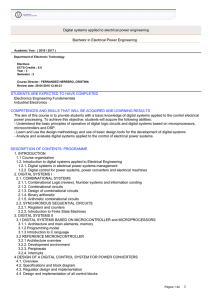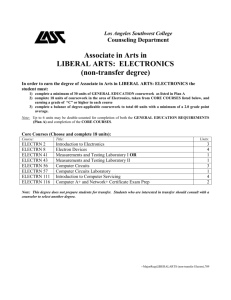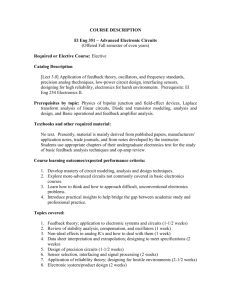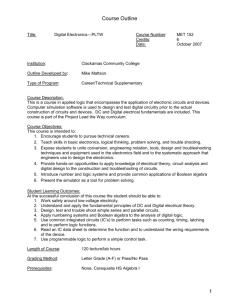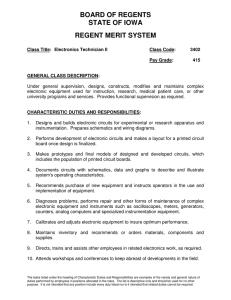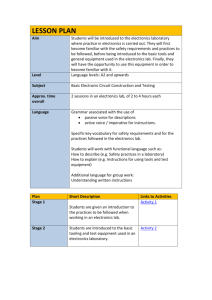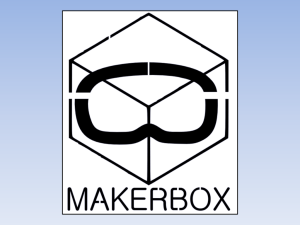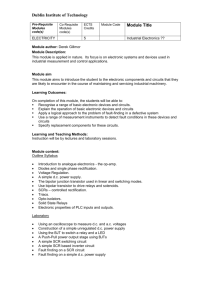03 DE Course Description
advertisement
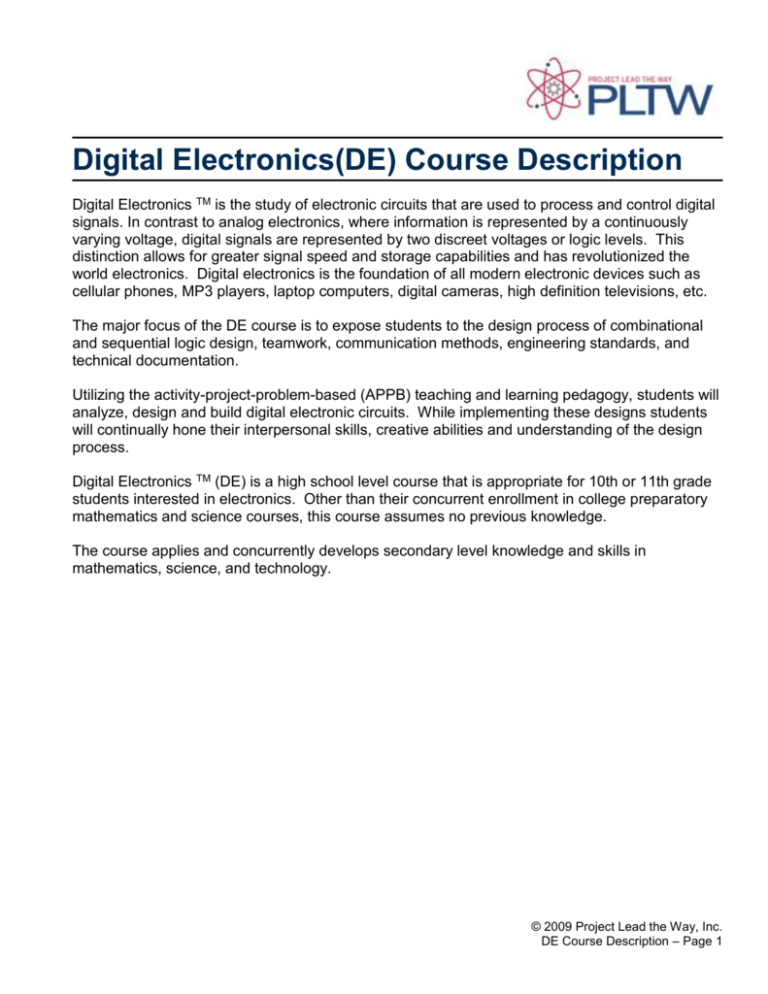
Digital Electronics(DE) Course Description Digital Electronics TM is the study of electronic circuits that are used to process and control digital signals. In contrast to analog electronics, where information is represented by a continuously varying voltage, digital signals are represented by two discreet voltages or logic levels. This distinction allows for greater signal speed and storage capabilities and has revolutionized the world electronics. Digital electronics is the foundation of all modern electronic devices such as cellular phones, MP3 players, laptop computers, digital cameras, high definition televisions, etc. The major focus of the DE course is to expose students to the design process of combinational and sequential logic design, teamwork, communication methods, engineering standards, and technical documentation. Utilizing the activity-project-problem-based (APPB) teaching and learning pedagogy, students will analyze, design and build digital electronic circuits. While implementing these designs students will continually hone their interpersonal skills, creative abilities and understanding of the design process. Digital Electronics TM (DE) is a high school level course that is appropriate for 10th or 11th grade students interested in electronics. Other than their concurrent enrollment in college preparatory mathematics and science courses, this course assumes no previous knowledge. The course applies and concurrently develops secondary level knowledge and skills in mathematics, science, and technology. © 2009 Project Lead the Way, Inc. DE Course Description – Page 1 The course of study includes: Foundations of Digital Electronics Scientific and Engineering Notations Electronic Component Identification Basic Soldering and PCB Construction Electron Theory & Circuit Theory Laws Circuit Simulation Breadboard Prototyping Component Datasheets & Troubleshooting Combinational Logic Analysis and Design Binary, Octal and Hexadecimal Number Systems Boolean Algebra and DeMorgan’s Theorems AND-OR-INVERT, NAND Only, and NOR Only Logic Design. Binary Adders and Two’s Complement Arithmetic Combinational Logic Design with Field Programmable Gate Arrays Sequential Logic Analysis and Design Flip-Flops, Latches and Their Applications. Asynchronous Counter Design with Small and Medium Scale Integrated Circuits. Synchronous Counter Design with Small and Medium Scale Integrated Circuits. Sequential Logic Design with Field Programmable Gate Arrays Introduction to State Machines. Introduction to Microcontrollers Software Development for an Introductory Microcontroller Real-World Interface: Introduction to Hardware Controls Process Control with a Microcontroller © 2009 Project Lead the Way, Inc. DE Course Description – Page 2
